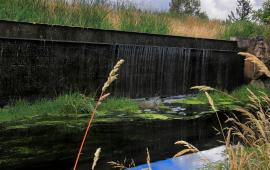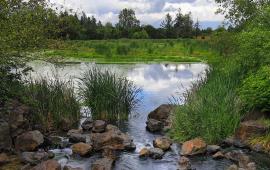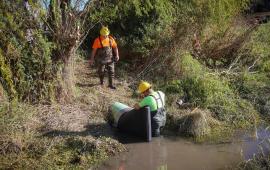Stormwater
Stormwater is water that originates from rain, including snow and ice melt. Stormwater can soak into the soil (infiltrate), be stored on the land surface in ponds and puddles, evaporate, or contribute to surface runoff. Most runoff is conveyed directly to nearby streams, rivers, or other water bodies (surface water) without treatment.
In natural landscapes, such as forests, soil absorbs much of the stormwater. Plants also reduce stormwater by improving infiltration, intercepting precipitation as it falls, and by taking up water through their roots. In developed environments, unmanaged stormwater can create two major issues: one related to the volume and timing of runoff (flooding) and the other related to potential contaminants the water is carrying (water pollution).
WHAT IS THE STORM DRAINAGE SYSTEM?
It's a network of structures, channels and underground pipes that carry stormwater (rain water) to ponds, lakes, streams and rivers. The network consists of both public and private systems. It's an integral part of the stormwater management system in the City and Linn County that is designed to control the quantity, quality, timing and distribution of storm runoff. All stormwater in the City eventually flows into the Willamette river.
The storm drainage system is not part of the wastewater (sanitary sewer) system, which carries water and waste from drains (sinks, bathtubs, showers, etc.) and toilets to a treatment plant to be treated and filtered. Stormwater does not flow to a treatment plant, but instead discharges directly into our waterways.
To report a problem, concern, or complaint with stormwater facilities click here. You can also swing by City Hall or contact the City Engineer at 458-233-6300.
For additional information about Millersburg's Stormwater Management, click the links below.





